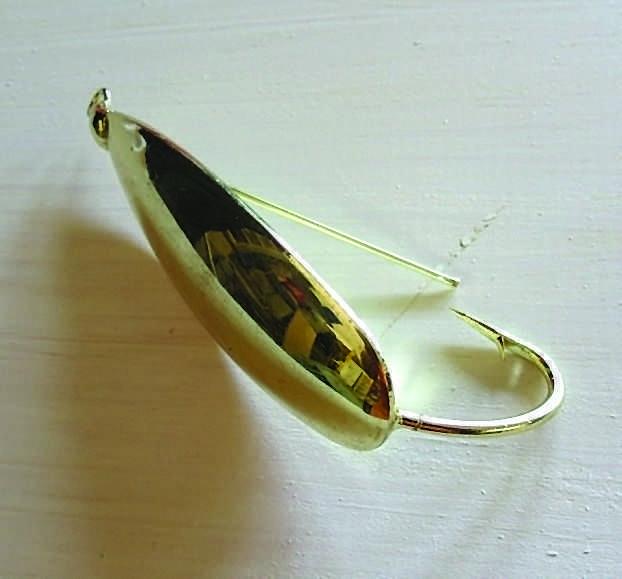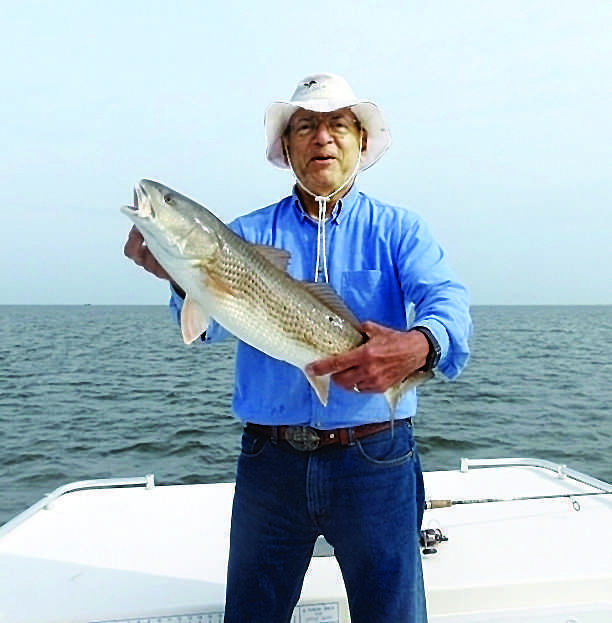By Jake Bussolini:
Normally when we think of Hatteras fishing, we think of offshore catches of dolphin, wahoo, sailfish, marlin and tuna. For an angler like me who was raised fishing freshwater lakes and rivers, fishing for redfish offers a fine transition to saltwater angling. Reds offer the opportunity to use spinning gear and the same fishing techniques used for freshwater fishing.
I was surprised to learn recently that catching redfish is a regular activity when fishing out of Hatteras. There are 11 guides who regularly take anglers out to experience the fun of a day of catching these fighters. Based on the recommendation of our offshore guide, I hired Capt. Aaron for a half-day trip. Aaron was born in Arizona but moved to the east coast at the age of 5. He spent his teen years fishing for tarpon and snook in Florida and then moved to Hatteras seven years ago and began guiding there. He has been a licensed guide for 20 years and likes the small-town environment of Hatteras, where he lives with his wife Tara and his son Shane.

Aaron fishes from a 24-foot Kenn Craft flat-bottom boat outfitted with a 175 hp Evinrude. This boat is very comfortable for two anglers but will also accommodate as many as four. Aaron uses his tower for sighting groups of reds and is very skilled at navigating the shallow waters of the Ocracoke Island grass flats, located at the bottom end of the Pamlico Sound.
Surprising to me was the use of a simple weedless gold spoon as the lure of choice. I have used this lure for many years up north fishing for northern pike but was surprised it was being used in this environment. Aaron said there are so many pinfish and birds in the area that they simply demolish any type of live bait that is used for the reds. The gold weedless spoon works just fine.

I took two other Mooresville, N.C. anglers with me on a half-day trip. We all caught several fish and released all but the one each we were permitted to take home to eat.
Not long after Aaron put us on the first spot, I landed a nice 26-inch red. The beauty of these fish is their commitment not to be brought into the boat. Since we were fishing in water from 1 to 2 feet deep, the fighting spirit of the redfish made the process of boating them even more interesting. Since the fish couldn’t go deep, they chose to swim 360 degrees around the boat, providing a fine fight.

I learned a couple of important lessons red fishing at Hatteras. First, always get a guide who is experienced with the shallow waters off of Ocracoke Island. Getting from the Hatteras dock to the grass flats requires some tricky navigation through and around some very shallow water. I actually saw two boats grounded in this shallow water. Second, make sure the boat is equipped for shallow-water angling. A power pole is good to quickly anchor the boat when a school of fish is spotted, and a tower to spot the schools is very helpful. Aaron often pointed out groups of stingrays in the area. This is a sign of healthy grass flats.
Redfish remain in the waters near Hatteras year-round. Some will move to the ocean in the winter, but they usually return in the spring. Generally the fish will average 24 to 27 inches, and there are a lot of big bull reds. Capt Aaron indicated that he runs about 200 half-day trips each year with the busy season being the summer tourist season. Aaron operates out of the Hatteras Harbor Marina and his web site is www.fishtightline.com.
Jake Bussolini is a freelance writer who has written six books about freshwater fishing. His work can be viewed on his web site www.jakestakeonfishing.com